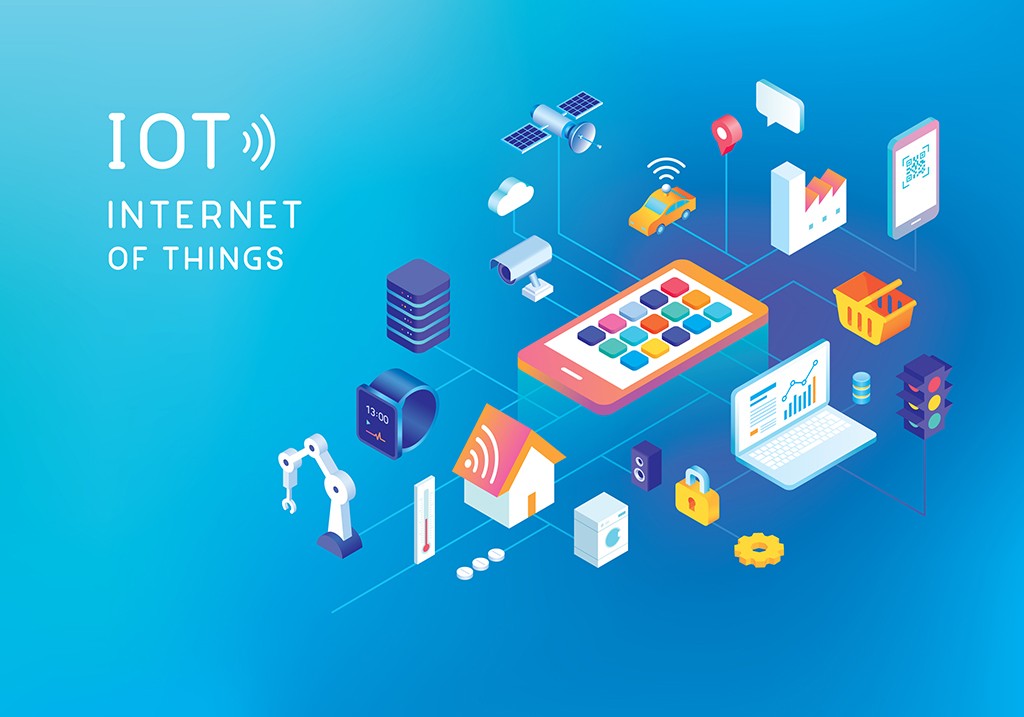The Internet of Things (IoT) has rapidly transformed the way we live, work, and interact with our environment. At its core, IoT refers to the network of interconnected devices that collect and exchange data through the internet. From smart refrigerators to industrial sensors, IoT is reshaping industries and enhancing everyday convenience. In this article, we’ll break down what IoT is, how it works, and the profound impact it’s having on the world.
What Is the Internet of Things?
The Internet of Things is a system of physical objects embedded with sensors, software, and other technologies that connect to and exchange data with other devices and systems over the internet. These “things” can be:
- Wearables (like smartwatches)
- Household appliances (like smart thermostats)
- Vehicles
- Industrial machines
- Medical devices
- Entire building systems
IoT is built on the concept that devices can communicate without human involvement, making automation and data-driven decisions possible in real time.
How Does IoT Work?
IoT relies on four key components:
- Devices/Sensors: Collect real-world data (e.g., temperature, motion, pressure).
- Connectivity: Devices send data via Wi-Fi, Bluetooth, 5G, or other protocols.
- Data Processing: Cloud platforms or edge computing systems analyze the data.
- User Interface: Results are presented to users through dashboards, alerts, or actions (e.g., turning off lights automatically).
For example, a smart thermostat detects indoor temperature and adjusts heating/cooling systems based on preferences or occupancy.
Everyday Examples of IoT in Action
IoT is already embedded in many aspects of daily life:
1. Smart Homes
- Voice assistants like Amazon Alexa and Google Nest control lighting, alarms, and appliances.
- Smart doorbells (Ring) offer video feeds and two-way communication.
- Refrigerators can monitor expiration dates or suggest grocery lists.
2. Healthcare
- Wearable fitness trackers monitor heart rate, sleep, and activity.
- Remote patient monitoring devices allow doctors to track vital signs from afar.
- Smart pill dispensers ensure patients take medication on time.
3. Transportation
- IoT in cars enables navigation, diagnostics, and predictive maintenance.
- Fleet management systems use IoT for tracking delivery trucks in real time.
- Smart traffic systems optimize traffic flow using sensor data.
4. Industrial IoT (IIoT)
- Sensors monitor machinery health to predict failures before they happen.
- Automation in factories increases productivity and reduces downtime.
- Energy usage sensors help cut costs and carbon emissions.
The Global Impact of IoT
IoT’s reach extends across sectors, improving lives, boosting efficiency, and creating new business opportunities.
1. Energy Efficiency
- Smart meters help utilities balance energy loads.
- Buildings use sensors to adjust lighting and HVAC systems based on occupancy.
2. Agriculture
- Soil moisture sensors inform irrigation systems, conserving water.
- Drones equipped with sensors monitor crop health and yield potential.
3. Smart Cities
- IoT enables efficient waste collection, traffic management, and air quality monitoring.
- Parking sensors help drivers find spots faster, reducing emissions.
4. Retail and Supply Chains
- RFID and GPS sensors track inventory in real time.
- Smart shelves notify retailers when stock is low.
IoT by the Numbers (2025)
| Metric | Estimated Figure |
| Connected IoT Devices | Over 30 billion devices globally |
| Market Size | Over $1.5 trillion worldwide |
| Top Sectors | Manufacturing, Healthcare, Retail |
| Projected Energy Savings | 20%+ in smart buildings |
The Challenges of IoT
While the benefits are vast, IoT also introduces new challenges:
1. Security Risks
IoT devices are often vulnerable to hacking. A single insecure device can provide entry into an entire network.
2. Privacy Concerns
Constant data collection raises questions about surveillance and how personal information is used.
3. Device Interoperability
Different manufacturers use various standards, making seamless integration difficult.
4. Data Overload
As devices generate massive amounts of data, managing and processing that data becomes complex.
The Future of IoT
The next phase of IoT is being driven by:
- 5G connectivity, offering faster and more reliable communication between devices.
- AI integration, allowing IoT systems to learn, predict, and automate more complex tasks.
- Edge computing, reducing latency by processing data closer to the source.
- Sustainability, with IoT playing a major role in reducing energy usage and carbon emissions.
Expect smarter cities, autonomous vehicles, and more advanced wearable technologies to evolve in the coming decade.
Conclusion
The Internet of Things has moved from a futuristic concept to a present-day reality, touching almost every corner of our lives—from how we sleep to how cities operate. As IoT continues to evolve, it promises greater convenience, efficiency, and innovation. But with great power comes the need for better security, regulation, and ethical use of data. If implemented wisely, IoT will continue to revolutionize our world for decades to come.
